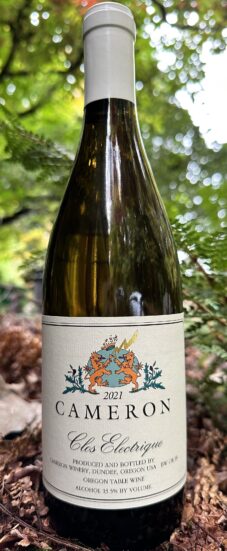Véraison for the season
From John, August 21st, 2012But of course the French have a noun for the time at which the grapes start to turn from green to red.
The grapes’ susceptibility to mildew begins to drop significantly at this point, which means that applications of chemicals meant to prevent mildew (such as sulfur and copper) can now cease. Physiologically at véraison the very important plant hormones called “giberellins” begin to drop precipitously.
Why should the winemaker care at all about this phenomenon? Giberellins stimulate cell elongation, which is how the berries increase in size from tiny BBs to their current size. When the giberellins drop, cell elongation ceases which means that berry size is now set. Traditionally this is therefore the time to start dropping excess crop.
At this point the prize goes to the patient viticulturist: as véraison proceeds it soon becomes obvious which clusters are the furthest ahead in the ripening which allows one to selectively drop less ripe (green) clusters. And perhaps in the end the most important aspect of veraison is that it is a metaphor for “light at the end of the tunnel”. Harvest is now within sight for the optimist, while for the pessimist it is the light of an oncoming train bringing rain, rot and calamities!
Share ThisRecent News & Rants
old vines, old wines & an old winemaker
One of the advantages of being an “old-timer” in the world of enology and viticulture is that our vines have aged along with me. It is a well known phenomenon in the world of wine that old vines tend to produce superior wine. A recent tasting of 18 vintages of Clos Electrique Blanc magnums proved that adage to be true! Overall, the consensus was that 8-14 years of aging seems to be the absolute “sweet spot” for this magnificent vineyard.
There’s More... >What do winter cold snaps do to the vineyard?
With climate progressively changing, one phenomena that is starting to occur fairly regularly is an occasional bout of intense winter cold weather. In January 2024, temperatures descended to as low as 4F in high altitude vineyards. Read on to learn how grapevines respond to this stress.
There’s More... >Cheers to a fantastic year ahead!
Bottles of Cameron Winery wine that are currently for sale.
2022 Dundee Hills Chardonnay, 2021 White Oak Pinot noir, 2021 Abbey Ridge Pinot noir, 2021 Clos Electrique Rouge, 2021 Clos Electrique Blanc, 2022 White […]
There’s More... >



